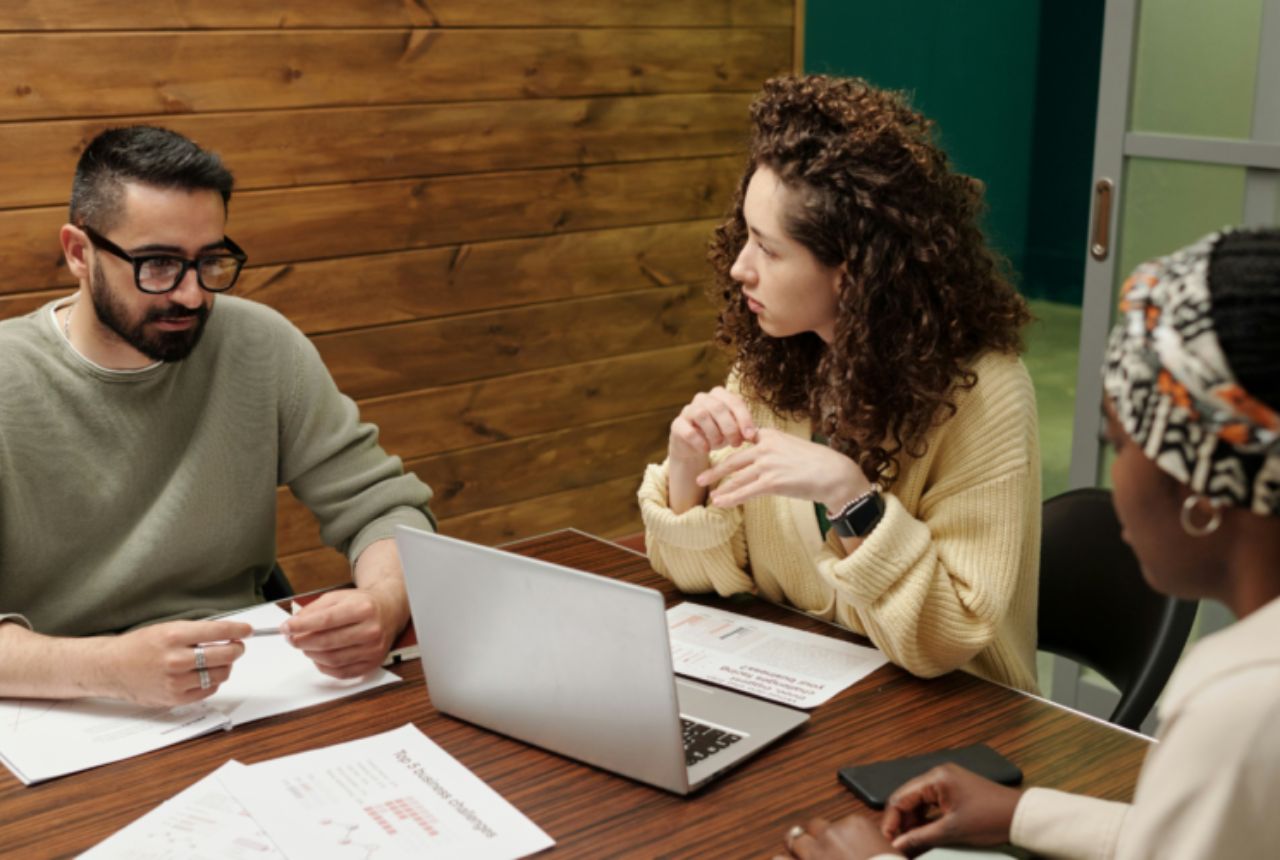I used to think posture was just about comfort or etiquette, until one day I found myself in a busy coffee shop, watching how people sat.
Some perched on the edge of their chairs, others sprawled out like they owned the place.
I started to notice patterns. Individuals with similar sitting styles sometimes shared similar temperaments. One person might clutch their knees tightly, hinting at nervous energy. Another might lean back, exuding carefree confidence.
Psychologists have studied body language for decades, and posture is a huge part of that. They use terms like “embodiment” to describe how our physical stance reflects our inner world—our thoughts, feelings, and personal traits.
Even if we’re not consciously aware of it, the way we position ourselves speaks volumes before we ever say a word. Over time, I’ve come to believe that your go-to sitting posture can be a giveaway.
From subtle tension in your ankles to how much space you take up, every detail offers a clue. Here are nine common ways people sit and the hidden trait each one reveals.
1) The cross-legged sprawl
Ever see someone who swings their leg over the other at a casual angle, almost like a half-lounge?
This posture often suggests an open-minded, flexible personality. It’s as if they’re physically and mentally relaxed, not worried about maintaining a perfect, upright pose.
They’re comfortable in their own skin and possibly welcome new ideas without feeling threatened.
In everyday life, people who sit like this tend to have a laid-back approach. They’re often creative and spontaneous. If you’re that person, maybe you’re the type who shrugs off minor setbacks and adapts quickly.
However, there can be a flip side. Sometimes, a cross-legged sprawl masks avoidance—“I’m so relaxed, I don’t want to deal with complications.”
But in most cases, it signals a breezy confidence that comes from a willingness to bend rather than break.
2) The perch
Then you have the “perchers”—individuals who sit on the edge of their seats, barely touching the backrest.
This posture screams readiness. It’s the sign of someone mentally and physically poised for action. They might be cautious or even anxious, but they’re definitely alert.
They rarely sink into the moment because their mind is already scanning for the next move.
Get Smarter Everyday Join Us On WhatsApp
Social people sometimes call this a “forward-leaning posture,” and it often occurs when we’re highly engaged or a bit nervous. It can also reveal a need to feel in control.
These people want a quick escape route if things go south. They might excel in fast-paced environments, where staying on your toes is a plus.
The hidden trait here is a potent combination of curiosity and vigilance, driven by a desire to be one step ahead.
3) The slump
We’ve all seen (or been) the slumper: shoulders rounded, back curved, basically melting into the chair.
According to studies, this posture can hint at low mood or a sense of defeat. But it’s not always negative. Sometimes people slump because they’re deep in thought, unconcerned with external appearances.
However, more often, it reveals a person who’s momentarily drained—emotionally or physically.
The slump might be your body’s way of saying you need rest or emotional support. Yet for some, this is just a comfortable position, nothing more. Either way, it broadcasts a sense of retreat from the world, a momentary step back.
4) The locked ankles
There’s a group of people who habitually sit with their ankles locked or wound tightly around each other.
Look closely, and you’ll notice their entire posture might be tense. This typically signals hidden anxiety or the desire to stay composed in uncertain situations.
They might be in a new environment and subconsciously bracing themselves against a potential threat.
I used to do this in high school when faced with a teacher’s tough question. Clamping my ankles was a reflex, an attempt to contain my nervous energy.
Psychologists have studied this kind of posture as a form of “self-regulation”—the body’s way to keep emotions from spilling out. If you see someone doing it, they’re possibly wrestling with internal stress.
The locked ankles are a quiet anchor, a way to feel a bit more grounded when the mind is racing.
5) The foot rest
Some people like to prop one foot on the opposite knee, forming a sort of figure-four shape.
Get Smarter Everyday Join Us On WhatsApp
I’ve noticed this posture often belongs to individuals who are confident and occasionally a bit irreverent. They’re relaxed enough to let a knee stick out, signaling a belief that they have the freedom to occupy a bit more space.
Yet there’s another side to it. This pose can also suggest impatience. The raised leg can turn into a subtle bounce if the person grows restless. It’s as if they’re saying, “I’m comfortable, but I’m also ready to move on if things get dull.”
In many cases, though, it’s just a default relaxed posture—people who sit like this often have an easygoing charm, coupled with a streak of self-assuredness that thrives on spontaneity.
6) The knee clasp
You’ll also see folks who press their knees together and rest their hands on them, forming a neat, contained pose.
It might look prim, but it can reveal strong discipline or a need for order. These individuals value structure— they’re not the type to spill coffee on the table or disrupt the flow of a meeting.
At the same time, clasping the knees can sometimes mask rigidity. It might show a preference for sticking to what’s safe and predictable. If that’s you, you might notice you have a hard time deviating from set routines.
But don’t assume it’s purely negative. This posture can also mean you’re exceptionally attentive. When you’re engaged or listening intently, your body might form a neat shape as you focus on every detail.
7) The wide-knee stance
Picture someone sitting down, legs spread, taking up a generous portion of the space.
It’s hard not to notice, and that’s part of the point. This posture often indicates self-assuredness, or at least a desire to appear in control. There’s a subtle message: “I’m comfortable here, and I won’t shrink to accommodate you.”
However, wide-knee sitters can come across as imposing if they’re not careful. In some settings, it might even read as disrespectful—like they’re dominating the room without regard for others’ personal space.
Still, for many, this posture is simply how they relax. The hidden trait is often a blend of confidence and territorial instinct, revealing that the person feels at ease with themselves and not afraid to be seen.
8) The half-turned seat
Ever notice the person who sits angled, half-facing the speaker, half-facing the exit? This posture can be puzzling.
They might be engaged in conversation, but part of their body is already pointed somewhere else. It suggests a divided focus or a desire to keep options open. They want to participate, but they won’t fully commit.
I’ve seen this in my own interactions when people are either uncertain about the topic or slightly uncomfortable with the group. The partial twist is a physical expression of indecision—“Should I stay or should I go?”
Get Smarter Everyday Join Us On WhatsApp
If you see someone doing this consistently, they might harbor a cautious or guarded mindset. It’s not that they’re unfriendly; they’re simply keeping one foot out the door, ready to pivot if the vibe goes sour.
9) The rigid upright
Finally, there’s the type who sits with a perfectly straight back, shoulders squared.
This can reflect a strong sense of responsibility or meticulous self-control. They might be the ones who correct their posture the moment they sense a slump. You’ll often find detail-oriented personalities here— individuals who like precision in everything, even how they hold themselves.
In some cases, that rigid posture can signal a fear of appearing weak or unprofessional. It’s as though they’re constantly reminding themselves to stay disciplined.
But for many, it’s genuinely about health or personal pride. They keep a straight spine to feel mentally sharper and physically energized.
Underneath, the hidden trait is a deep respect for order—these folks frequently believe their outer form should match their inner drive.
Final thoughts
Sitting might seem like the least informative thing we do, but body language tells a different story. Each of these nine postures reveals an aspect of how we handle stress, comfort, or social dynamics.
Some of us cling to our knees because we crave order, while others sprawl out to show we won’t be confined. Neither is right or wrong—our posture simply uncovers the wiring underneath.
Next time you find yourself waiting in a lobby or scanning a room, check how you’re sitting.
Are you perched like you’re ready to flee, or relaxed with a leg draped over the other? Ask what might be going on internally. The awareness alone can shift the energy of an interaction. If you notice tension in your ankles, maybe loosen up. If you’re always slumped, stand tall for a moment and see how it changes your mood.
We can’t make sweeping judgments based solely on how someone sits, but it’s a starting point. Our bodies often speak our truths before our mouths catch up.
By tuning in, you might gain a clearer understanding of both yourself and the people around you. Sometimes, a simple seat adjustment can reveal we’re carrying more than we realized. Or it can signal we’re ready to leap into something new.
Either way, paying attention to posture is a doorway into deeper self-awareness—and that’s always worth exploring.
Get Smarter Everyday Join Us On WhatsApp







